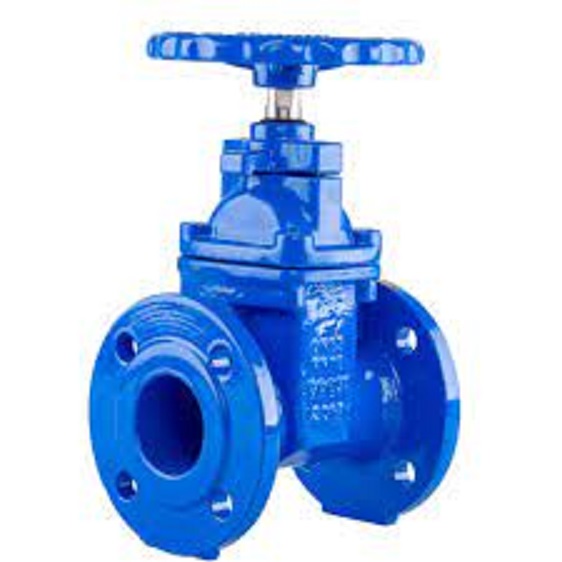
What is a non-rising stem gate valve?
A non-rising stem gate valve is a type of gate valve that features a flexible disc as a means of controlling the flow. The disc moves vertically in the direction of the flow. The non-rising stem, also known as an external stem, is used to open and close the gate. But it does not move up or down during rotation. The gate valve can be fully open or fully closed. This type of valve is widely used in various industries, particularly in water supply projects, public works, water treatment plants, fire protection systems, etc.
The advantages of using a non-rising stem gate valve compared to other types of gate valves
Using a non-rising stem gate valve offers several advantages compared to other types of gate valves. Here are some of the key benefits:
Space Efficiency: Non-rising stem gate valves are more space-efficient because they do not require additional vertical space for the stem to move up or down during operation. This makes them ideal for installations with limited vertical clearance.
Cost-Effective: Non-rising stem gate valves are generally more cost-effective than rising stem gate valves. Their design is simpler, requiring fewer components and less maintenance, which can result in lower installation and maintenance costs.
Prevention of Contamination: The non-rising stem design helps prevent contamination of the stem threads by external elements such as dirt, dust, or corrosive substances. This ensures smoother operation and reduces the risk of stem binding or malfunction.
Durability: Non-rising stem gate valves are known for their durability and longevity. The absence of vertical movement in the stem reduces wear and tear, making them less prone to damage and extending their service life.
Suitable for Underground Applications: Non-rising stem gate valves are commonly used in underground applications, such as water supply projects or buried pipelines. Their design eliminates the need for frequent access to the valve for maintenance, making them more suitable for buried installations.
Operational Safety: The non-rising stem gate valve design provides better operational safety. The stem does not protrude above the valve, reducing the risk of accidental damage or injury caused by external objects or human contact.
It’s important to note that the selection of the gate valve type should consider the specific application requirements and operating conditions to ensure optimal performance and reliability. We can assist you in selecting the appropriate valve with the best experts in Saudi Arabia.
Non-rising stem gate valves & high temperatures
Non-rising stem gate valves can be used in applications with high temperatures. But it depends on the specific design, materials used, and temperature limitations specified by the manufacturer. It is crucial to consult the valve manufacturer or refer to the valve’s technical specifications to determine its suitability for high-temperature applications.
In high-temperature environments, the valve materials must be able to withstand elevated temperatures without compromising their structural integrity or performance. The valve body, wedge, seat, stem, and packing materials should be selected or designed to be suitable for the intended temperature range.
It’s worth noting that extreme temperatures can affect the performance and longevity of valve components. Such as stem packing or sealing materials. Sealing integrity and thermal expansion characteristics should be carefully considered to ensure proper operation and prevent leakage.
In summary, non-rising stem gate valves can be used in high-temperature applications. It is crucial to verify their suitability based on the manufacturer’s guidelines, temperature limitations, and selection of appropriate materials to ensure safe and reliable operation.


























